The moment of looking for the camera that will accompany you throughout endless photographs can cause you as much excitement and pleasure as nervousness and stress. This is due not only to the sheer number and quality of brands, models, functions, and features, but also to the anxiety that the entire process generates. And this usually leads to errors when buying your SLR camera.
When making a decision , there are many factors that you should consider to avoid a bad purchase .
That is why today we will review some of the following most frequent mistakes made when buying a digital SLR camera. I run the risk that you already know some of these errors, but I prefer to risk it and warn you well ? :
- Overpaying for things you don't need
- Pay more to have a camera that weighs more
- Choosing the camera only for its megapixels
- Skip the necessary “extras”
- Not listening to colleagues (or reading them)
- Not learning before buying
- Not investigating the camera thoroughly
- Unfamiliar terminology
- Believing that only “top brands” exist
- Pay more to have more lenses or accessories
- Don't leave money for a good goal
- Do not test the camera in person
- Let others decide for you
- Not knowing why you (really) need an SLR camera
- Believing that the camera makes the photographer
If you were thinking of getting one, you cannot stop reading this article to delve into them and be able to avoid them!
THE MOST FREQUENT MISTAKES WHEN BUYING AN SLR CAMERA
Let's see these 15 errors one by one with their reasons.
1. OVERPAYING FOR THINGS YOU DON'T NEED
Overpaying for a camera you don't need is one of the most common mistakes photographers make. Even though you 're capable of getting amazing photos with just about any DSLR you find in stores, it's all too easy to be tempted to go out of your budget for a camera with higher specs that you don't really need.
The best way to get the most out of your investment in a camera is to pay for what you are actually going to use . And don't spend a fortune on features you won't use.
Taking some time to analyze what you plan to use it for can save you a lot of money. Money that you will need to get the objectives with which you will take your best photographs . We will see this in more depth in error 11 ? .
2. PAY MORE TO HAVE A CAMERA THAT WEIGHS MORE
Another common mistake that many make is to associate the weight of a camera with its quality and features. And, even worse, with the final photographic result.
In my humble opinion, there is no relationship between the weight of a camera and the quality of its photos. I can't imagine anyone contemplating a great photograph of these that leave you speechless, putting their hand to their chin and saying, as a good connoisseur of the subject: «Man, it's obvious that this photo was taken with a very, very heavy camera. I'm telling you, all you have to do is see the vividness of the colors, look at the composition, but what a more professional use of light. My God! Surely the photographer had a fat camera, believe me, I understand this, you know?
I POINT OUT
It is true that professional photographers (those who are engaged in photography as a profession or trade) usually invest money in very expensive photographic equipment. But they require very specific features, for professional purposes, that you can't find in any SLR camera.
It is also true that these cameras, from 2,000 to 3,000 euros, and even more, usually have a disproportionately large body and dimensions. But from there we must not deduce that fat camera = good camera. Each camera is designed for a specific type of user and specific needs.
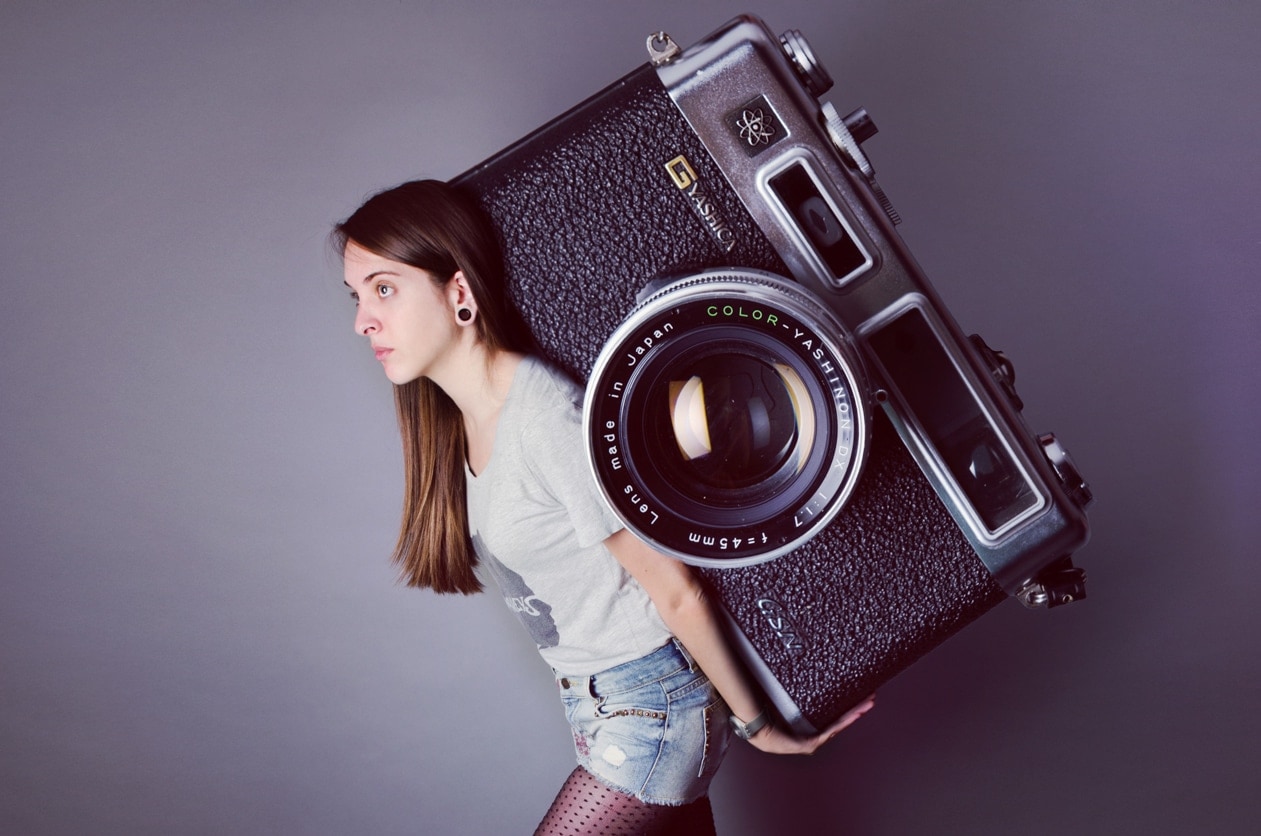
DIFFERENT USERS FOR DIFFERENT CAMERAS
A professional camera is required a totally different performance to that of an amateur user. If you hurry me, the amateur photographer makes varied use of his SLR camera, one day at home, another day on the street, on an excursion or at a family event. As an amateur, you need a light and versatile machine, something that you can carry around without being too bulky and, above all, without making you unnecessarily tiring.
Remember this when choosing your next SLR camera.
3. CHOOSE THE CAMERA ONLY FOR ITS MEGAPIXELS
The features that manufacturers highlight as fundamental are not always really important when it comes to getting a digital SLR camera.
The way cameras are promoted based on their megapixels, to allude to their image quality, is a prime example of this. Remember that megapixels mark the print size that the photograph will have. But they have nothing to do with the quality of these, as is usually promoted.
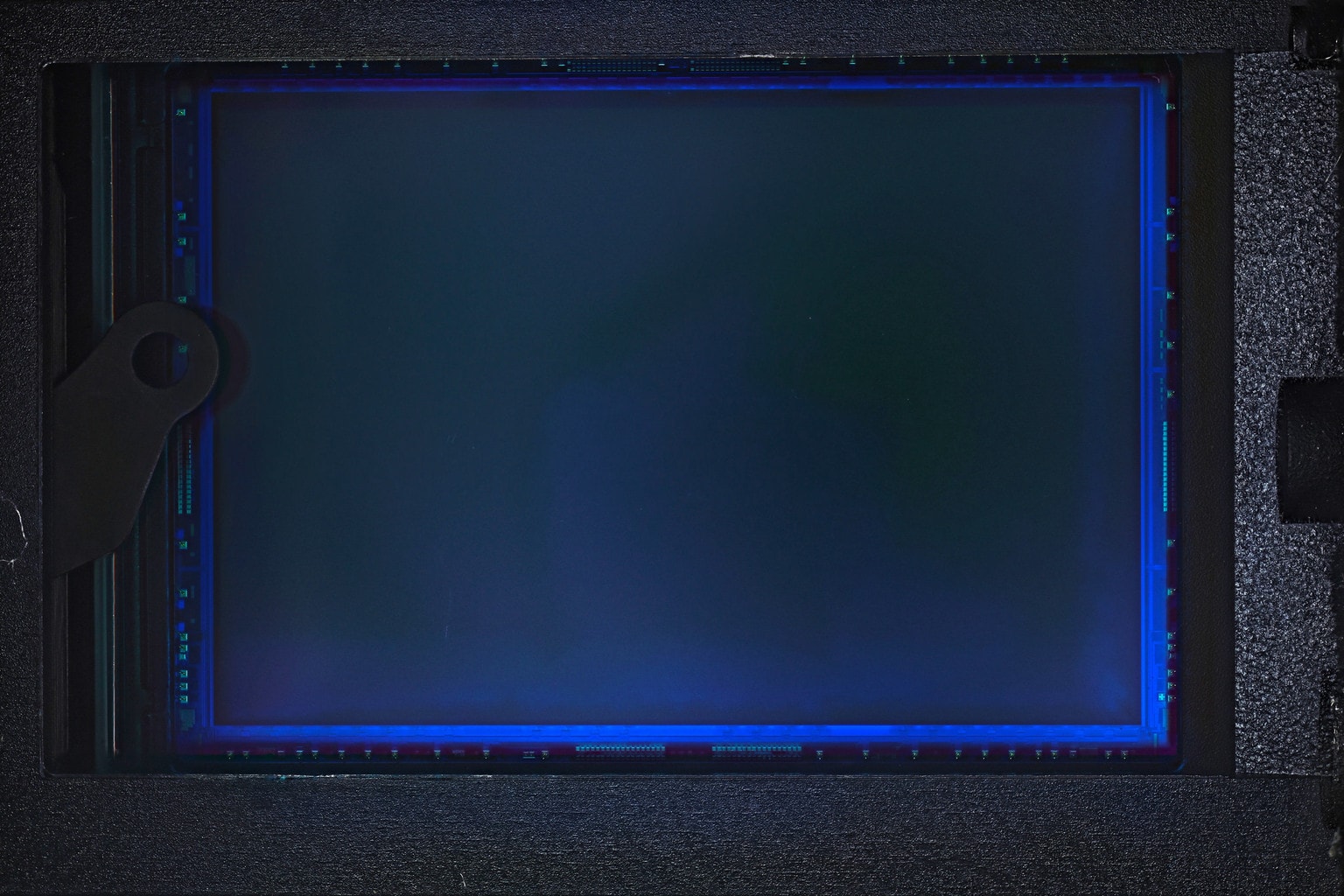
WHY DO WE GIVE SO MUCH IMPORTANCE TO MEGAPIXELS?
There was a time when you had to look at the number of megapixels that cameras had because most offered a very low amount. Which was reflected in some images that, as soon as you wanted to enlarge them, lost resolution, ending up in the famous pixelated photography effect.
But today, focusing on megapixels (in excess) is monumental nonsense. Any current SLR camera offers more than enough megapixels for incredible print quality at a reasonably large size.
4. OVERLOOKING THE NECESSARY “EXTRAS”
Keep in mind that the world of SLR photography is not only limited to the camera and that there are many accessories that will be essential for you to make the most of your camera's potential. In fact, in many cases the camera may even be the cheapest of the entire photographic kit.
Lenses, filters, extra batteries, high-speed memory, backpacks to transport your equipment, external flashes, diffusers and tripods are part of the endless accessories and tools necessary for you to take your photos to the highest level.
Be careful , again, you must be careful to know your photographic needs well in order not to oversize yourself.
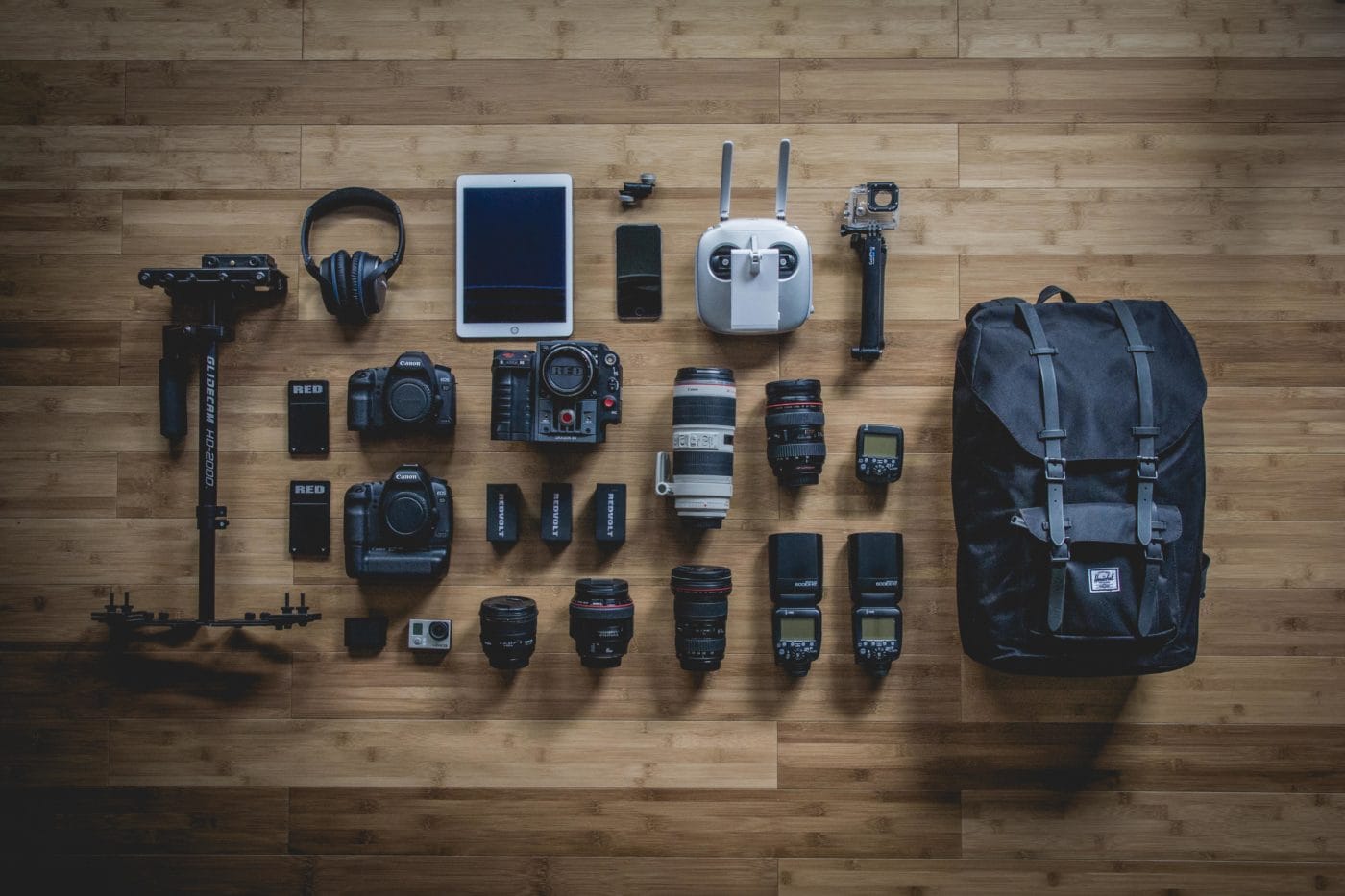
5. NOT LISTENING TO COLLEAGUES (OR READING THEM)
When buying, not taking advantage of the Internet to learn the opinions of other colleagues borders on irresponsible.
Before you go looking for your next SLR, take some time to compare the different alternatives available on the market. And also to know the opinions of those colleagues who have already done with them.
6. NOT LEARNING BEFORE BUYING
Okay, when you go to buy your first reflex camera, it is understood that you do not devote much to photography. And most likely you are unaware of the ins and outs of photographic material. But be careful, this does not exempt you from spending a little time, before buying, to inform yourself a little about the basics of the matter. You don't need to do a Master's or anything like that, but you do need to look for information in blogs and forums and rationalize your purchase.
An informed purchase, beyond the opinion of users, is always a useful purchase.
7. NOT INVESTIGATING THE CAMERA THOROUGHLY
In line with the previous error, although the opinions of colleagues can help you, it is useful that you download the user manual and take a look at it. This way you will know all its functions and characteristics in depth. And, together with the opinions of colleagues, you can get a more specific idea of the camera you want to buy.
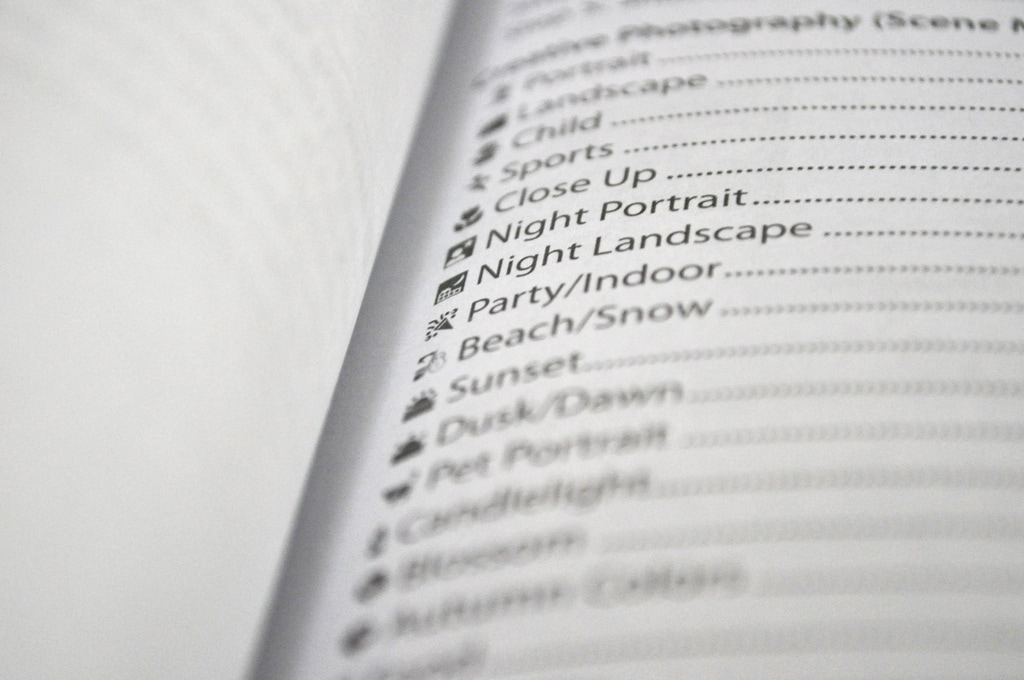
8. NOT KNOWING THE TERMINOLOGY
Not taking the time to study the terminology used by vendors and manufacturers when offering their products is a mistake that can cost you dearly, and not just in money.
In order to find the perfect DSLR for you, it is very important that you understand the terminology used by sellers and online sales sites . In this way you will be able to interpret the specifications of SLR cameras and make the best purchase decision. For this, I recommend that you read the references of the following article to make a better choice .
9. BELIEVING THAT THERE ARE ONLY "TOP BRANDS"
If you are one of those who believe that the world of digital photography is limited to Nikon and Canon, you are making a mistake. Every day more second-hand brands , such as Sony, Pentax, etc., launch cameras, lenses and accessories that have nothing to envy to the supposedly first class products , so you should not ignore them.
10. PAY MORE TO HAVE MORE LENSES OR ACCESSORIES
You have informed yourself and finally you know what camera you want. You go to a physical or online store to buy it and, suddenly, you find 7 different packs of the same camera model: without lens, with lens, with lens + another extra lens, with transport bag and without it, with storage bag. transport, tripod and memory card, etc. A real mess.
The funny thing about it is that, for all these extras, you have to pay. It is not that they give it to you as a courtesy gesture, no matter what. They offer them to you as an unbeatable price offer, but most of the time they charge you within the price you pay for the camera.
MY RECOMENDATION
My recommendation in these types of occasions is that you do not buy anything that you did not intend to buy before seeing these packs. As much as you think that they are useful accessories and that you would end up using them, two things happen:
- First, many times you will be wrong. This is marketing. A good job of marketing makes us, as consumers, want to buy things that we were not initially looking for and we do so convinced that they will indeed have some use. Most of the time they don't have it, and…
- Second, regarding the accessories that they will offer you, they will never, ever include the best tripods, memory cards or backpacks in the promotion package. The best-in-class products are already having the sales they want, they don't need to get them out of the way with a promotion. Promotions are valid precisely to remove store inventory and release products that otherwise no one would buy.
That is why I advise you to forget about all unnecessary accessories when buying and focus all your attention on buying the camera. If it comes with a stock lens that's fine, you'll need a lens anyway for the first few days. But do not invest money in more elements. Later you will have the opportunity to invest in a good lens, tripod, backpack and whatever you need.
11. DO NOT LEAVE MONEY FOR A GOOD GOAL
And speaking of objectives, did you know that buying a good camera is only half the journey? Even if it comes with a lens or two included. You still need to buy a target. I know what you're thinking “How is that possible, when it already comes with a lens or two built in? Why do I need to spend the money on more targets?»
The important thing to know here is that the lenses that usually come with stock SLR cameras are generic lenses. That is, they are made for a very general type of photography.
You, like most of us, will be interested in one type of photography or another, and there you will need a specialized lens. For example, if you like landscape photography, you'll need a wide-angle lens; And if you're more into portraits, you'll want the famous King of Lenses .
THE IMPORTANCE OF THE GOAL
If you think this is bad news, luckily, you're wrong ? . The beauty of SLR photography consists in being able to interchange the lenses and use, depending on the circumstances, one or the other.
This allows manufacturers to bring to market extremely specialized lenses, with spectacular optical results in the type of photography for which they are designed. Photographing a landscape with a good wide angle has nothing, but nothing to do with photographing it using the typical standard lens, the 18-55mm. The same goes for any other type of objective.
As I was saying, buying the camera is only half the journey, the other half is buying a good lens. Of course you don't have to buy everything at once, it starts with the camera, obviously, that way you try it out and tinker with it, but instead of investing money in an expensive SLR that you won't give 100% use to, why Why not buy an SLR of your level and save the rest to invest in the lens you need?
12. NOT TESTING THE CAMERA IN PERSON
If you have the chance to meet your next SLR before you buy it, do it. In this way, you will be able to evaluate live and direct those characteristics that called your attention to it.
Look not only at its physical appearance, but also at its functionality, that is, that its weight, size, location of the buttons, etc., adjust to your needs and desires. Experiment with your future camera before you buy it. When you have it in your hands, you will know if you are the ideal couple ? .
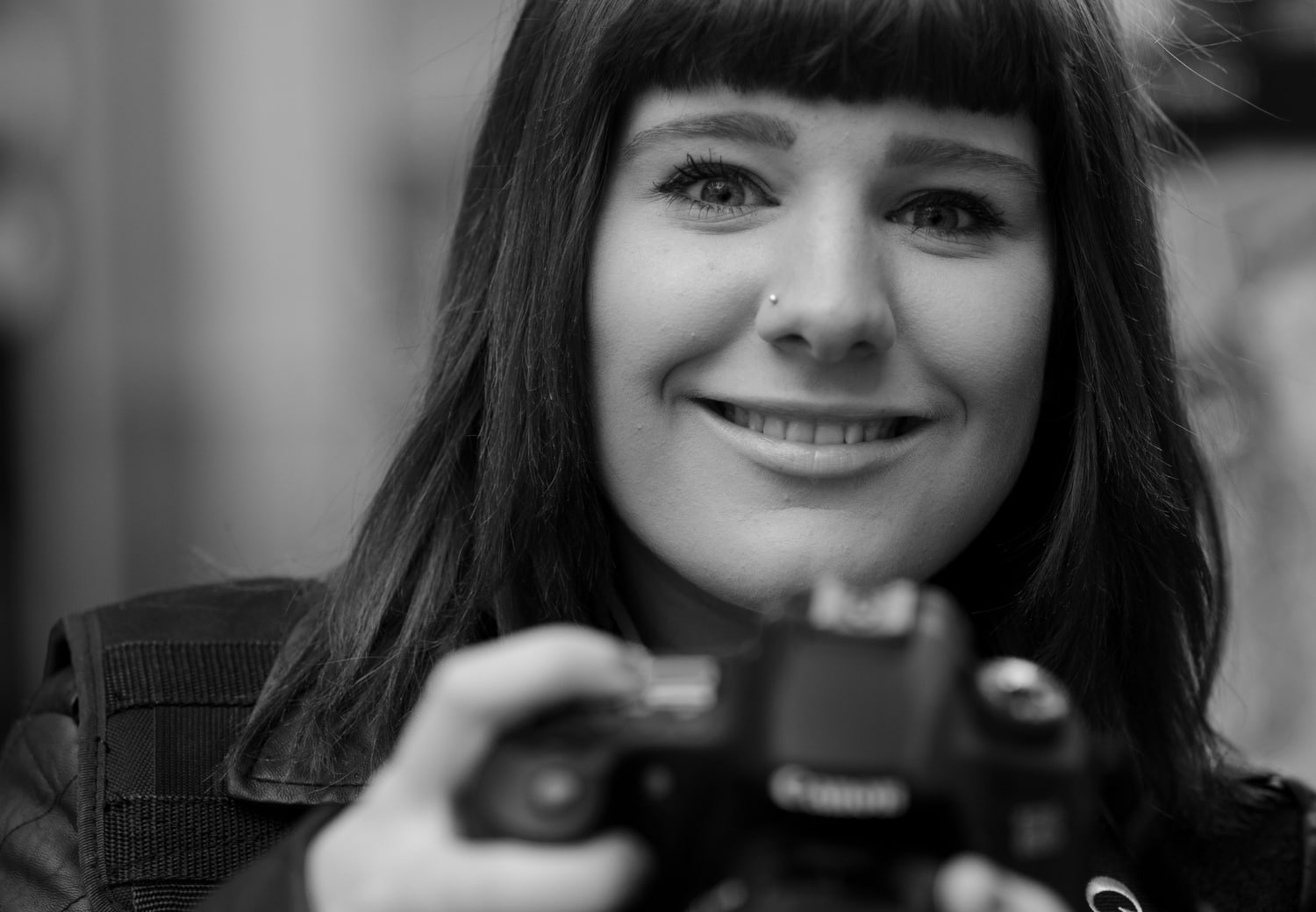
13. LET OTHERS DECIDE FOR YOU
It is very common that sellers or colleagues want to convince you to buy a different SLR camera than the one you have in mind.
Most sellers are honest and will give you good advice, but some will try to capitalize on your uninformed look and go out of their way to put you in the least selling camera. Or the one that they have no way to get rid of or the one that reports the highest profit margin.
COMPARISON IS THE KEY
I don't want you to be suspicious of everyone either. Just shop around, ask the seller for his opinion and compare it with another seller's. And then with that of another, and contrast it with what you have reported in other media. Only then can you draw a definitive conclusion from yourself.
You should not buy a camera only based on the opinions of third parties, however valuable they may be, but based on your own needs. Of course, for you to be able to do it, you must be clear about what you plan to use the camera for.
14. NOT KNOWING WHY YOU (REALLY) NEED AN SLR CAMERA
The only way to ensure a responsible purchase is, first of all, to ask yourself and try to find the real reason why you want to buy an SLR camera. It sounds strange to hear this from someone who has a photography blog, but there is nothing in the world that I hate more than seeing an idle SLR camera, lying in a drawer without being used for months and months.
If you are going to buy an SLR camera, I want you to use it and give it a useful life. SLR cameras are a wonderful instrument for communicating, moving and transmitting stories. But I have seen so many users buy one because they didn't know what to do with 700 euros that was burning their pockets, and then not use it for months, which is infuriating.
15. BELIEVING THAT THE CAMERA MAKES THE PHOTOGRAPHER
If I were to ask you, why do you want to change cameras? I'm sure one of the reasons for doing this is “because I want to take better pictures” . When you are not involved in the world of cameras and SLR photography, but only contemplate it from a distance, you think that compact, small and tiny cameras, the kind that you have had all your life, are for amateurs, that's clear. The other ones, big and black, with a lens that you can turn with your hand and such, those are the professionals and the ones that take good photos. Mistake!!!
Professional would rather be a range within SLR cameras. If you go to a photographic store you will see that they have many SLR cameras. Of these, quite a few will be professionals, but many others will be semi-professional or even for the beginning photographer.
THE CAMERA IS THE TOOL
What you really want to buy is almost certainly a beginner or hobby user level SLR . There are cameras like this that are true wonders, at an affordable price and with very advanced features , but that does not mean they have to be considered professionals.
The camera is just a tool that you will use to transform your ideas into photographs, but under no circumstances should the camera stop being a means to become an end in itself.
The true magic in this wonderful art that is photography happens within you, thanks to your creativity and your desire to turn your ideas into a photographed reality.
HOW TO AVOID THESE MISTAKES WHEN BUYING YOUR SLR CAMERA?
To avoid making the mistakes that I have just mentioned, it is necessary that you defeat the worst enemy that every purchase decision has: anxiety.
While it is true that the moment to start the search for your next camera is a very exciting process, it is also true that it can cause you a lot of anxiety. Or that it ends up pushing you to make a decision that you would not have made with more information at the time of purchase.
But keep in mind that much of the information necessary for you to make the best purchase decision does not come from the environment but rather emanates from you and your needs .
ASK YOURSELF THESE QUESTIONS
That is why, before deciding to get a new camera, it is very important that you ask yourself:
"What can I do with this new camera that I can't do with my old camera?" "Do I really need an SLR camera?"
Thank you for joining me in this article. If you enjoyed it or found it minimally useful, I would appreciate it if you would give it a recommendation on Facebook, Twitter or Google+. If you do I will feel very supported.
Oh, I forgot, if you are looking for more information, be sure to take a look at my list of the best SLR cameras .
And finally, if you come up with any other error that you have overlooked, that has happened to you, or to someone close to you, please do not hesitate to share it in the comments, let's help the community to avoid these errors; ).
Happy photography ?

![NEVER MAKE THE MOST TYPICAL MISTAKES WHEN BUYING AN SLR CAMERA [UPDATED]](https://photographychef.com/wp-content/uploads/2023/02/never-make-the-most-typical-mistakes-when-buying-an-slr-camera-updated.jpg)
